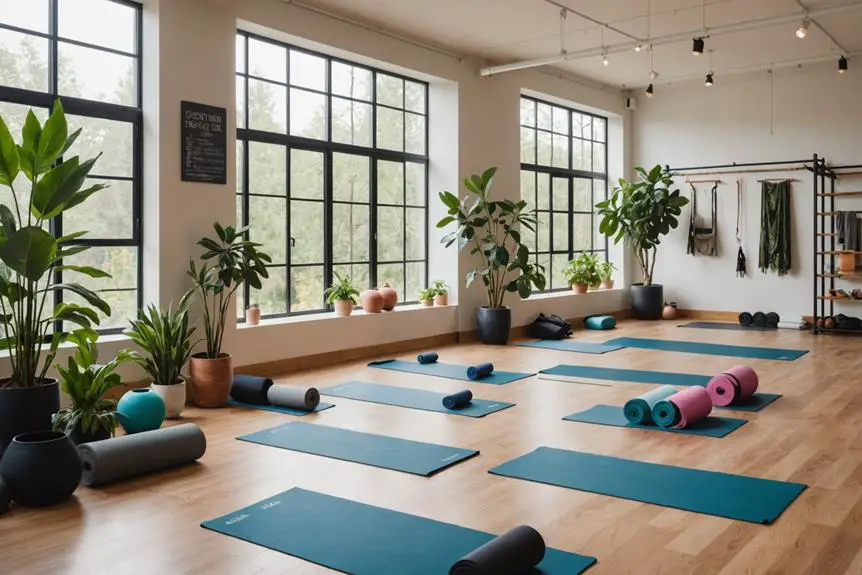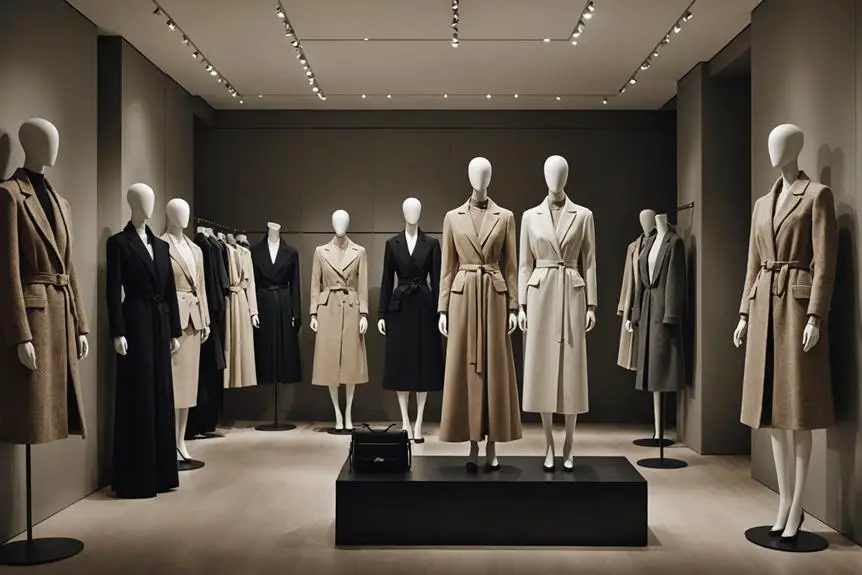Dressing as a yoga instructor means focusing on comfort, flexibility, and professionalism to enhance your practice and benefit your students. Choose breathable, moisture-wicking fabrics like cotton or spandex, which allow unrestricted movement and keep you cool during classes. Opt for fitted styles in classic, neutral colors to maintain a polished look, while layering helps you adjust to studio temperatures. Remember, your attire should reflect your passion for yoga and inspire confidence in your students. Regularly rotate your outfits to keep them fresh and professional, while selecting pieces that resonate with your personal style will create a welcoming environment that encourages engagement. Want more tips?
Importance of Comfortable Attire
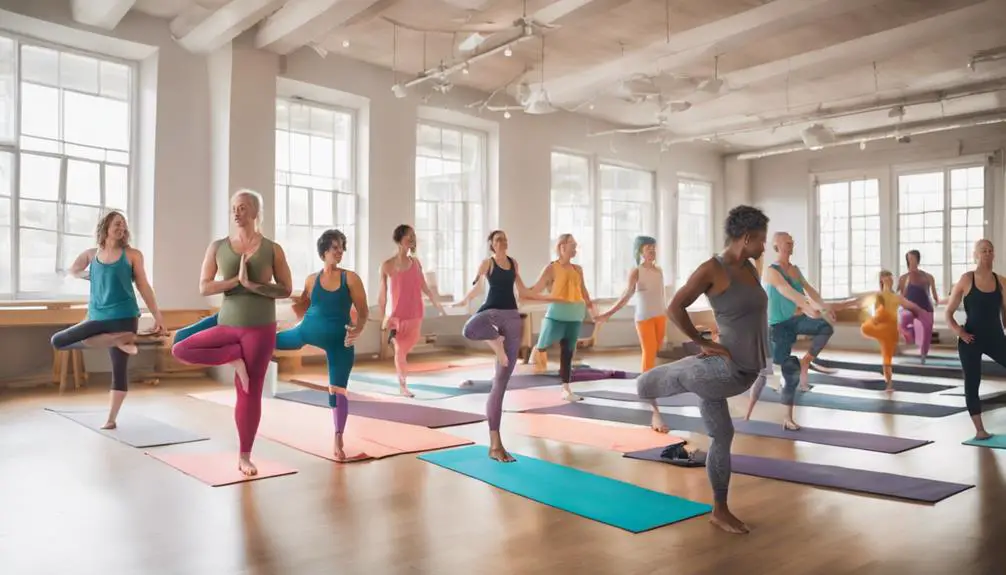
When you're teaching yoga, wearing comfortable attire is vital, as it directly impacts your ability to demonstrate poses effectively. When you choose yoga pants that fit well and allow for unrestricted movement, you set the stage for a successful yoga practice. Your students need to see your alignment, and if you're restricted by your clothing, it can hinder their understanding.
Breathable fabrics become significant, especially in hot yoga classes, where you're likely to sweat. Choosing materials that wick moisture away helps you maintain a comfortable body temperature, allowing you to focus on teaching instead of feeling uncomfortable. Plus, stretchable fabrics are key; they guarantee you can shift smoothly between poses, illustrating each movement with grace and clarity.
Layering is another smart strategy. Yoga studios can often fluctuate in temperature, and having the ability to adapt your attire keeps you comfortable throughout the class. This flexibility not only enhances your experience but also reflects a professional image.
Investing in high-quality fabrics pays off in the long run, as they withstand wear and tear while maintaining a polished appearance. This attention to detail showcases your dedication to both your practice and your students. So, as you select your attire, prioritize comfort and functionality; it'll not only elevate your teaching but also inspire your students to embrace their own yoga journey with enthusiasm and confidence. Remember, when you feel good in your attire, it shines through in your instruction!
Choosing the Right Fabrics
Selecting the right fabrics is essential for enhancing your yoga practice and teaching effectiveness. When it comes to yoga clothes, comfort and functionality should be your top priority. For instance, breathable fabrics like cotton or moisture-wicking blends are ideal, especially during hot yoga sessions, as they effectively wick away sweat, keeping you comfortable and focused. You'll want to feel free to move, so opt for stretchy materials like Lycra or spandex, which allow for a full range of motion and maintain their shape during various poses. Proper care of your clothing, such as using mild detergents and air drying, can help preserve fabric integrity and color vibrancy, ensuring your attire remains professional and presentable for your classes (importance of washing vintage clothing).
While it might be tempting to choose overly loose fabrics for comfort, remember that they can obstruct visibility when you demonstrate techniques. Clear body positioning is vital for your students' learning, so fitted yoga pants or tops are a must. Additionally, prioritize high-quality materials that are durable and can withstand frequent washing and wear. This not only keeps you looking professional but also enhances your credibility as an instructor.
Balancing Style and Professionalism
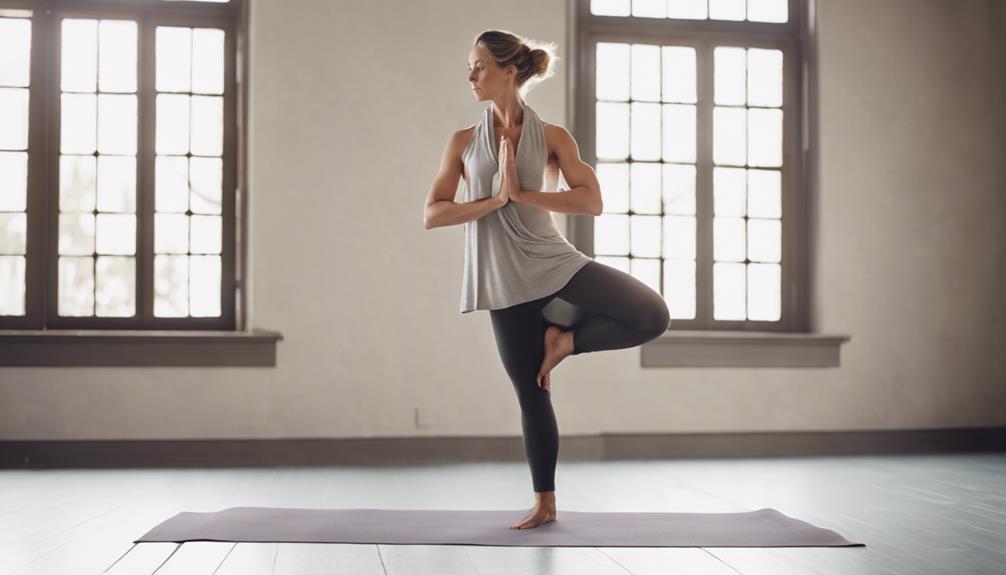
Finding the right balance between style and professionalism is key to making a strong impression as a yoga instructor. You want your clothing to reflect your passion for yoga while maintaining a polished appearance. Choosing comfortable and functional attire is vital, as it allows you to move freely and demonstrate poses effectively during a yoga class.
To achieve this balance, consider the following table that highlights key elements of style and professionalism:
| Style Element | Description | Example |
|---|---|---|
| Comfort | Opt for breathable, stretchy fabrics | High-quality leggings |
| Professional Aesthetic | Stick to classic styles in neutral colors | Simple tank tops |
| Individuality | Incorporate personal touches, like accessories | Unique yoga tops |
By selecting clothing that emphasizes a professional look while allowing for comfort, you can minimize distractions and keep your students focused on their practice. High-quality fabrics that maintain their appearance over time are a worthwhile investment, as they guarantee your attire remains opaque and presentable.
Moreover, keep your outfits neat and clean, rotating them regularly to avoid excessive wear. Having a backup outfit handy can save you from unexpected wardrobe malfunctions. Embrace your individuality within the professional scope of your role, as unique attire can foster a positive connection with your students and enhance their overall experience. Remember, striking this balance will not only elevate your teaching but also inspire confidence in your students.
Color and Ethical Considerations
Color choices in your yoga attire play a significant role in creating a positive atmosphere for both you and your students. Selecting the right hues not only enhances your teaching experience but also influences how your students perceive the class. For instance, earth tones can provide grounding effects, while shades of blue promote calmness, aligning beautifully with the principles of yoga. Additionally, wearing vintage attire like Ralph Lauren can add a touch of classic style and authenticity to your look, as identifying vintage pieces allows you to express your unique personality. Yogi Bhajan encouraged wearing white or cream to symbolize purity and elevate spiritual consciousness, which can inspire a deeper connection during practice.
In addition to color, the fabrics you choose are equally important. Opting for ethical fabric made from natural materials not only contributes to your comfort but also positively impacts energy and well-being. You'll find that many sustainable brands prioritize both quality and environmental responsibility, allowing you to make mindful choices that reflect your values. By supporting these brands, you set an example for your students, encouraging them to embrace conscious living and mindfulness—two core tenets of yoga.
When you wear attire made from sustainable materials, it enhances the overall ambiance of your class, fostering an environment that promotes awareness and connection. Remember, your attire is not just a reflection of your personal style; it's a representation of the values you wish to impart. By thoughtfully considering your color choices and fabric ethics, you can create a harmonious space that uplifts both you and your students, making each practice an enriching experience.
Practical Tips for Instructors
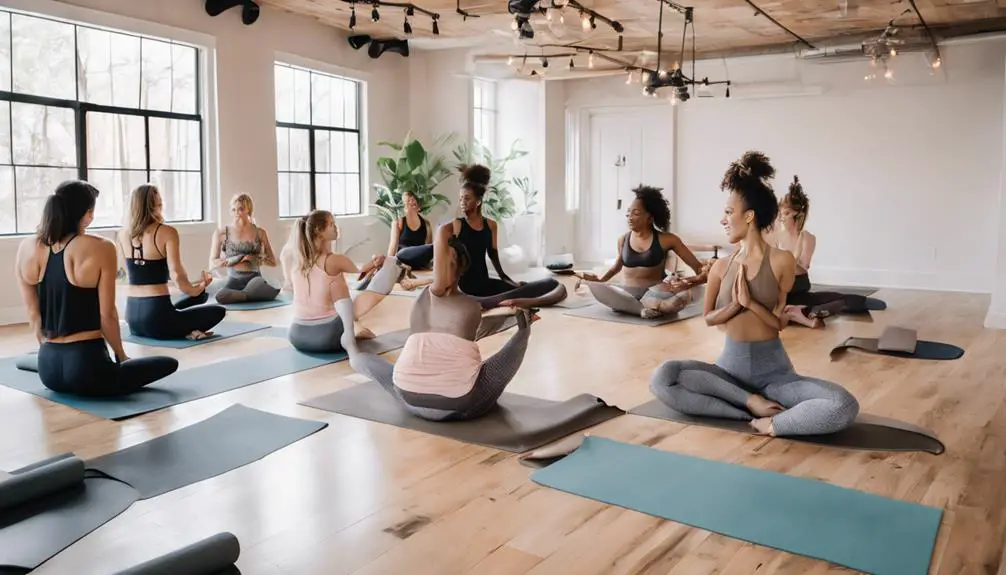
When it comes to dressing as a yoga instructor, comfort and functionality should be your top priorities. You want to feel at ease while guiding your students through poses, and the right attire can make all the difference. Choosing breathable fabrics is crucial, as they allow for moisture absorption and temperature regulation, similar to wool's natural properties. Here are some practical tips to help you shine as a yoga teacher in your yoga studio:
- Choose Breathable Fabrics: Opt for materials that are stretchable and breathable. This guarantees you maintain mobility during various poses and demonstrations without feeling restricted.
- Avoid Loose Clothing: Steer clear of overly loose or drapey garments. They can obstruct visibility and hinder movement when you're demonstrating techniques, making it difficult for your students to follow along.
- Prioritize Quality: Invest in durable fabrics, especially for your pair of leggings and pants. Quality attire not only looks professional but also maintains its appearance and opacity during movement.
- Layer Up: Since class temperatures can vary, layering your clothing is crucial. It allows you to adjust your outfit as needed throughout the day, enhancing your overall comfort.
Lastly, keep your attire clean and professional. Regularly care for your outfits and rotate them to avoid excessive wear on your favorites. By following these tips, you'll not only look great but also feel confident leading your classes. Remember, a well-dressed yoga instructor inspires trust and sets the tone for an engaging, enjoyable experience for everyone involved!
Frequently Asked Questions
What Should a Yoga Teacher Wear?
When considering what a yoga teacher should wear, prioritize comfort vs. style. Opt for breathable yoga fabric types and stay updated on instructor fashion trends. Choose outfits that enhance movement while maintaining professionalism and modesty in appearance.
What Is the Dress Code for Yoga?
When considering the dress code for yoga, think comfort and functionality. Follow yoga attire trends by choosing breathable fabrics while prioritizing comfort considerations. Select pieces that enhance movement, ensuring you feel confident and capable during practice.
What Type of Clothing Is Recommended for Yoga?
For yoga, you'll want breathable fabric types like lightweight cotton or Lycra. Prioritize comfort vs. style with high-waisted leggings, and use layering techniques to adapt to temperature changes while maintaining a professional appearance.
How Much Do You Tip a Yoga Instructor?
You know how a little gratitude can elevate the class environment? When it comes to tipping etiquette, consider showing instructor appreciation with 15% to 20% of the class fee, especially for exceptional sessions or workshops.
